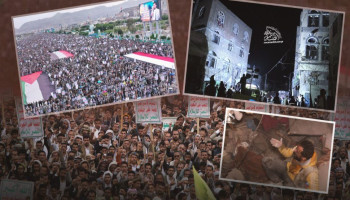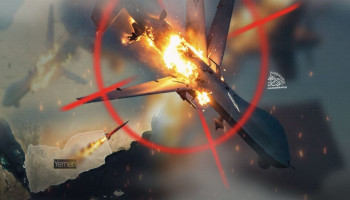Netanyahu's goal will reveal the winner and loser in the ongoing battle of wills between Hezbollah and the criminal entity. Sayyid Hassan Nasrallah, in his recent speech, skillfully sidestepped the media noise about the action and counteraction, instead focusing the resistance efforts on a clear and concrete objective: stopping Netanyahu from achieving his goal. With a smart strategy, Nasrallah declared that Netanyahu’s goal to return the settlers "will not happen," turning it into a challenge. He urged everyone to watch the field closely, saying, "The days and the battlefield will tell."
This challenge not only puts political and military pressure on the Israeli enemy but also stirs discontent within the divided Jewish public, which is already frustrated with Netanyahu’s government. Nasrallah, well-versed in psychological warfare, is effectively wearing down the enemy’s morale. He leads the media front in perfect sync with Hezbollah’s military goals, at a time when Hezbollah’s supporters around the world, not just in Lebanon, are feeling deep concern.
Hezbollah's Military Tactics
At the same time, Israel’s political and military leadership has intensified efforts to pressure Hezbollah, trying to change the combat dynamics that have been in place since the war on Gaza began. Israel wants to return settlers to the north and avoid the embarrassment of having a security zone for the first time since its founding. They are also trying to push Hezbollah into abandoning its declared link between the Lebanese front and the war in Gaza, forcing it to accept an unfavorable ceasefire on Israeli terms—terms that already caused previous negotiations to fail.
The key question is how Hezbollah is managing this battle, especially given Israel’s constant attempts to drag it into a fight on its own terms, under its own regional and international calculations.
It’s worth remembering that Lebanon’s resistance entered this conflict on October 8, the second day of the Al-Aqsa Flood, to support the broader regional axis. Hezbollah’s carefully calculated moves have put significant military pressure on Israel, while also giving weight to Palestinian negotiations. Nasrallah has reaffirmed that Hezbollah’s support for Gaza will continue despite any losses, openly challenging Netanyahu and "Israeli Defense Minister" Yoav Gallant by declaring that they will not succeed in returning the settlers as long as the war in Gaza continues.
Hezbollah Expands the Battlefield
With every Israeli military attack aimed at stopping Hezbollah, its operations have only intensified. On the ground, Hezbollah is making it harder for Israeli and American efforts to patch up the situation. The group has successfully maintained its role as an inseparable support front for Gaza.
Recently, Hezbollah has shown that Israeli attacks on Lebanese territory have backfired. Despite heavy Israeli bombardment aimed at destroying Hezbollah’s rocket platforms and military capabilities, on September 22, Hezbollah launched its most extensive missile attacks yet, reaching as far as southern Haifa. They also used new missile types, like the Fadi 1 and Fadi 2, which have ranges of 70 and 105 kilometers, respectively.
Notably, Hezbollah has not yet deployed its more advanced long-range precision missiles or targeted Tel Aviv. So far, its strikes have been limited to military bases and industrial facilities, such as Ramat David Airbase and sites belonging to Rafael Advanced Defense Systems. Hezbollah has also managed to keep hundreds of thousands of Israelis under threat, proving that the return of settlers to the north is still far off, contrary to what Netanyahu and the Israeli government are aiming for.
The U.S. play as the "Mediator"
It is obvious that Netanyahu’s intensifying aggression on the Lebanese front is backed by the U.S. . American officials may claim they oppose a war in Lebanon and present themselves as mediators, but behind the scenes, the U.S. is supplying Israel with military aid. American diplomats, including Biden's envoy to Lebanon, Amos Hochstein, are frequently seen in the region, but the crucial factor is the continuous flow of U.S. military support to Israel, which Washington prefers to keep quiet.
In recent days, U.S. Central Command General Michael Kurilla visited Israel and met with senior military leaders at the Northern Command to discuss expanding the conflict in Lebanon. This has been a recurring pattern throughout the Israeli aggression. After Israel’s latest unprecedented attacks, which targeted Hezbollah’s communication systems, the Pentagon announced that the USS Truman aircraft carrier would sail to the Eastern Mediterranean, near the Lebanese coast. The Pentagon made a similar move at the start of the Gaza war, claiming it was meant to prevent the conflict from spreading, though the real goal was to give Israel the freedom to focus on Gaza.
This open-ended U.S. support and clear partnership show that Washington will stand by Israel no matter the circumstances or pressures. Any perceived disagreements between Netanyahu and Biden are just political theater, aimed at maintaining an appearance of distance. But in reality, Israel will always find Washington by its side, protecting it from any legal repercussions for its war crimes. This partnership is pushing the region toward a larger war, despite American claims of trying to avoid such a scenario.
Even though the U.S.-Israel alliance is now more visible than ever, it is still important to keep highlighting it. This is especially true in the face of U.S. media and political narratives that try to paint America as a neutral mediator, a portrayal that much of the Arab media unfortunately continues to promote.







